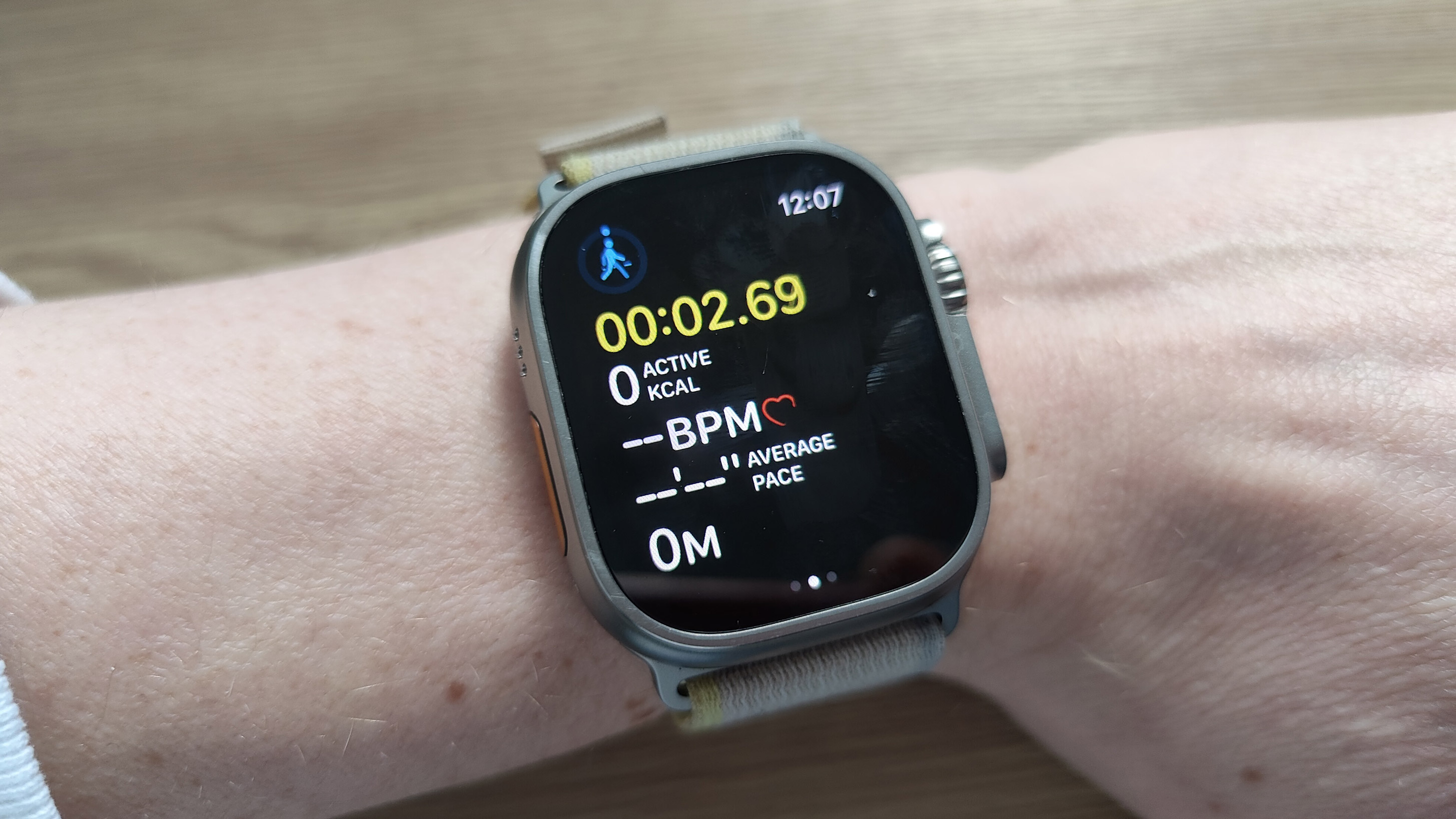Why watchOS 10 should improve your gym workouts... but it probably won't
Apple Watch 9 and watchOS 10 should make big changes to indoor workouts

The Apple Watch has gone through plenty of changes in its lifetime. The hardware design doesn’t change a great deal each time, and hasn’t since its inception – aside from the occasional leaps in design like the Apple Watch Ultra or Apple Watch SE. A lot of the innovation over the years has come from the software side, with different iterations of Apple’s watchOS operating system. It sounds as though 2023’s update, watchOS 10, is about to be a big one.
watchOS 10 is likely to be announced at Apple’s WWDC 2023 conference on June 5, alongside iPhone 15, Apple Watch 9, and similar updates to iOS and iPadOS. watchOS is expected to offer a revised home screen and potentially interactive widgets that are akin to the ‘glances’ of older versions of watchOS, or a little like the list of widgets found on the best Garmin watches.
But however good the Workout app could finally give a boost to weightlifting and gym-based workouts.
The case for an upgrade
The Apple Watch has never been a slouch in the fitness department, as the wearable has always been able to track plenty of workouts. And yet, it was only with watchOS 9 that we saw Apple really drill down into metrics for running.
Adding details about stride length, vertical oscillation (the amount your torso moves vertically) and ground contact time means runners can dig deeper into their technique, or even calculate running power.
It’s a sizeable step up in terms of information about a given activity, and on a technical level, allows Apple to offer multiple workout view options to find the details that are important to you.
The trouble is that this newfound sense of utility for runners doesn’t extend to other disciplines. Apple Watch’s workout profiles use the same ‘language’ of calories burned, heart rate, and time spent training to determine the quality of a workout regardless of whether you’re doing HIIT, strength training, or yoga. Although running data needs to track a relatively consistent motion over a distance or time, at least in its most basic format, lifting and HIIT and so-on are much more freeform, with multiple exercises to track and a lot of them require very little in the way of body movement.
Sign up for breaking news, reviews, opinion, top tech deals, and more.

The big problem
The trouble is that it's challenging to record workouts like this on-wrist. As it stands, you can ditch your Apple Watch for a Notes app while lifting or doing yoga and get an accurate measure of progress, but it would be nice to see effort from Apple here.
If you work out in the gym, there’s a good chance you’ll need to use a third-party app like Stronglifts, Fitbod or Liftin’ to track your lifts. These apps have features such as pre-designed plans at weights specified ahead of time, and allow you to tick off moves once completed in-app. By making the process more manual (a la those third-party options earlier) Apple could simply track the metrics as you tick exercises off of a to-do list.
It’s a little disappointing to have to lean on third-party tools (as good as they are) when Apple has made fitness a clear focus of the Apple Watch, but I’m hopeful watchOS could see some big boosts.
Given the different cardiovascular efforts required of faster-paced, high-rep weight-lifting and low-rep powerlifting, there’s an argument for Heart Rate Zones to be implemented in gym workouts to ensure each set doesn’t push too hard.
Recovery is key
Another key metric is recovery, and this is something the Apple Watch lags behind the likes of the best Fitbit and Garmin watches.
With Fitbit (provided you’re signed up for the company’s Fitbit Premium service), users can use a “Daily Readiness Score” to track how well-rested their body is. It pulls data from workouts, rest periods, and even sleep to suggest just how much activity is right for your body.
Apple’s rings systems have become a key part of the watchOS experience, so much so that the Movement ring has graduated over to the iPhone. However, they’re outdated, as they don’t take recovery metrics into account – possibly due to the fact Apple knows that most watches aren’t worn at night due to shorter battery life than other fitness-focused wearables, which measure battery in days and weeks rather than hours. Sometimes it’s OK to take a rest day or simply work out a little less.
Increase battery so that sleep tracking is more viable, and tie that in with a Fitbit-style recovery algorithm, and Apple could vastly improve the fitness experience for gym-goers, but the challenge is to improve both hardware and software to achieve this. Given that Apple revamped the Apple Watch line-up with the Apple Watch Ultra and Apple Watch SE2 last year, the rumor mill claims that hardware improvements are taking a back seat this year.
There’s plenty to be done with the Workout app in watchOS 10, and it’ll be fascinating to see how Apple manages it. Here’s hoping it can build on the lessons from last year.

Lloyd Coombes is a freelance tech and fitness writer for TechRadar. He's an expert in all things Apple as well as Computer and Gaming tech, with previous works published on TopTenReviews, Space.com, and Live Science. You'll find him regularly testing the latest MacBook or iPhone, but he spends most of his time writing about video games at Dexerto.